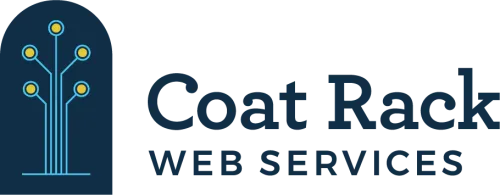July 23, 2025
Donors want to see the difference their support makes. But when donor impact reports lack clarity or emotional connection, it can fall flat. Poorly crafted donor impact reports often miss the opportunity to connect the donor's gift to a meaningful outcome. This is critical, especially when only about 10% of lapsed donors return, making it harder and costlier to re-engage supporters once they've walked away.
Many nonprofits struggle to communicate their results in ways that build trust, demonstrate accountability, and encourage continued support. This blog helps organizations identify what's going wrong and how to improve their communication strategies to better share nonprofit impact and inspire continued support.
Most Common Mistakes Nonprofits Make in Their Donor Impact Reports
Sometimes, even with the best intentions, your donors' reports miss the mark. It's not always due to a lack of effort—it's often because of overlooked details or misaligned messaging. Here are the top reasons they fall short:
-
Too Much Data, Not Enough Meaning - Sharing numbers without context can confuse rather than inspire. Contributors want to know how the numbers relate to real-world change, not just see them listed.
-
Lack of Storytelling - Contributors connect to people and outcomes, not just statistics. Without stories, your report risks feeling cold or transactional.
-
Generic Messaging - One-size-fits-all language makes the report feel impersonal. Backers across donation levels expect a message that reflects their unique impact.
-
Irregular Delivery - Inconsistent reporting weakens trust and supporter engagement. Timely, expected updates help reinforce transparency and connection.
-
Missed Opportunities for Gratitude - Donor impact reports should reflect genuine appreciation. Compelling donor impact reports can strengthen relationships, inspire continued giving, and demonstrate progress over time. Failing to express clear thanks can make even the most informative report feel incomplete or ungrateful.
At Coat Rack, we help nonprofits avoid these common mistakes by turning scattered information into clear, accessible formats that highlight nonprofit impact and deepen funder understanding.
Best Practices for Effective Donor Reporting That Builds Trust
Donors want more than just numbers—they want annual updates that feel honest, clear, and purposeful. When done well, effective donor reporting can reinforce your nonprofit's values and keep supporters committed long-term. This table outlines the key elements that build credibility and trust, and serves as a donor reporting reference that nonprofits can rely on to deliver effective updates.
|
Principle |
What It Means |
Why It Matters |
|
Transparency |
Be honest about outcomes, including challenges |
Builds credibility with contributors |
|
Timeliness |
Share impact regularly—annually, quarterly, or monthly |
Keeps them connected and engaged |
|
Clarity |
Use plain language and break up complex details |
Makes reports easier to read and understand |
|
Relevance |
Focus on outcomes that align with your mission and values |
Reinforces the funder's reason for giving |
Following these principles will help nonprofits create reports that don't just inform, but build lasting donor relationships. A clear, consistent donor reporting approach reinforces your nonprofit's commitment to transparency and long-term success. Coat Rack's tools simplify the creation of consistent, tailored donor reports that follow these best practices.
Measuring and Communicating Nonprofit Impact in Meaningful Ways
To create strong donor impact reports, you need more than numbers. A clear focus on nonprofit impact helps funders see the true value of their contributions. Use this framework to showcase key moments, outcomes, and nonprofit impact from the past year:
1. Highlight Outcomes, Not Just Activities
Instead of "we held 12 workshops," explain that "these workshops helped 150 families secure stable housing." Show how each initiative drives measurable change.
2. Combine Metrics with Stories
Pair a key metric (like "90% of students improved their grades") with a testimonial or short case story. Data gains impact when paired with a human voice.
3. Use Visuals to Simplify the Message
Graphs, infographics, and before-and-after photos help illustrate nonprofit impact without overwhelming the reader. These visuals also make your annual report more engaging and accessible.
4. Keep It Actionable
Include a clear next step, like "your gift helped us do this—here's what's next." Invite continued participation to maintain momentum.
5. Showcase Community and Partnership Impact
Highlight stories where collective support, such as from local businesses, volunteers, or board members, led to success. Use this to foster a deeper sense of community and expand your outreach.
We help nonprofit organizations measure and present their results with clarity. Coat Rack's data-driven tools make it easy to show funders exactly how their donations make a difference—and highlight the nonprofit impact their support helps achieve.
How to Customize Donor Reports for Different Giving Levels
Donors give at different levels, and their expectations often reflect that. Tailored donor reports show that you value their role and respect the level of their contribution. While some may be happy with a short summary, others want deeper insight into how their support drives change. A one-size-fits-all approach to donor reporting can leave some contributors underwhelmed—or worse, feeling unappreciated.
Customizing donor reports isn't just about formatting—it's about making them feel seen and acknowledged. Thoughtful reports drive better engagement, especially when aligned with their priorities and outcomes. Personalized donor reporting not only improves engagement but also strengthens trust and encourages recurring donations.
Tiered Reporting Strategy
-
General Donors: Use brief, visually engaging updates that showcase top-line results. Highlight a few key stats, beneficiary quotes, or a single standout accomplishment to maintain a connection. These donor reports should be easy to skim while still reinforcing the donor's value to your cause.
-
Mid-Level Donors: Offer more detailed donor reports with curated stories, project-level outcomes, and qualitative insights. This group values transparency and appreciates understanding how their donation supported a specific initiative. Thoughtful donor reports for this segment can deepen trust and increase loyalty.
-
Major Donors: Deliver a highly personalized experience. Provide executive summaries, one-on-one conversations, and tailored visuals or infographics. Include impact narratives, financial charts, and resource forecasts to demonstrate long-term value.
These variations ensure your communications remain relevant and intentional. With Coat Rack, nonprofits can easily segment audiences and automate the right level of donor reporting to the right supporter. It's how you turn a simple update into a meaningful part of your stewardship and fundraising strategy, supported by a thoughtful donor reporting process that adapts to their needs.
Stronger Donor Reports Start with the Right Tools
We understand how frustrating it can be when your reports don't land the way you hoped. But when done right, they can become one of the most powerful tools to build trust, show impact, and keep your supporters engaged.
At Coat Rack, we help nonprofits turn raw data into donor-centered stories that resonate. Whether you're struggling with formatting, delivery, or measurement, we'll help you create effective reports rooted in strong reporting practices that clearly communicate your nonprofit's impact and reflect your mission.
Ready to improve your reporting? Let's build updates that donors read, trust, and share—powered by intentional strategies that foster transparency, gratitude, and long-term community support. With stronger impact communication, nonprofits can increase engagement and showcase lasting change. Contact us now!



